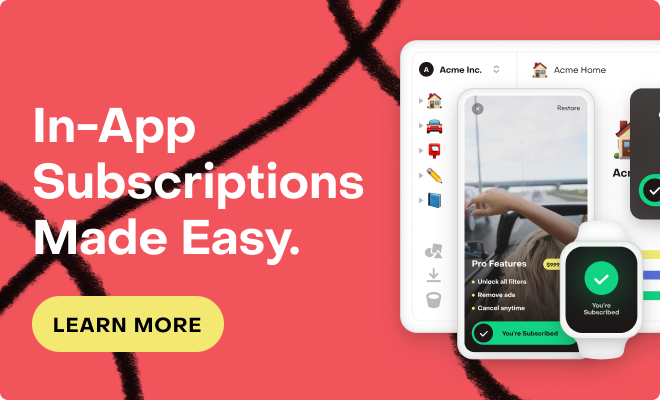Hello everyone,
First of all thanks for a very well thought out product, entitlement, offering setup.
It is indeed well thought.
I have an educational app. The app has react-native expo as front-end and Python FastAPI as backend.
My app has a monthly and yearly subscription options. I am pretty sure that it will stay that way. Meaning… It is very unlikely for me to add consumable goods, one-shot purchases, extra packages etc..
I am able to get subscriptions working for anonymous users. However, it is suggested that I use Purchases.login for more defined customer tracking. Fine :) I tried it but I was not really successful.
Or, … it is successful but I did not get it.
I have my own authentication and backend for my app.
So, I wanted to base subscriptions on user login info which is email as username and a password.
Once the user logs in, I would save the user email and also do Purchases.login() with email.
Once I get the subscription info after Purchases.login() I would check for activeSubscriptions array
const ci = await Purchases.logIn(u);
if (ci.customerInfo.activeSubscriptions.length !== 0)
which is also fine but the thing is Revenuecat uses Apple Id of the physical device.
Then it records my apps login info that is different in most cases or can be different.
For instance, I could borrow a friends iPad and want to login with my own account and subscription.
However, the paying account can be different but it shows with the Purchase.login email.
Then when I want to buy subscription with different email then the loggedin Apple Id on the device, it is not possible. Or is there any other way to buy subscription different than device’s loggedin Apple Id?
I find this quite confusing.
If that is the case, is it better to just leave the customer info anonymous or always use the buying apple Id? So I can not get it working the way I wanted to.
What should I do?





